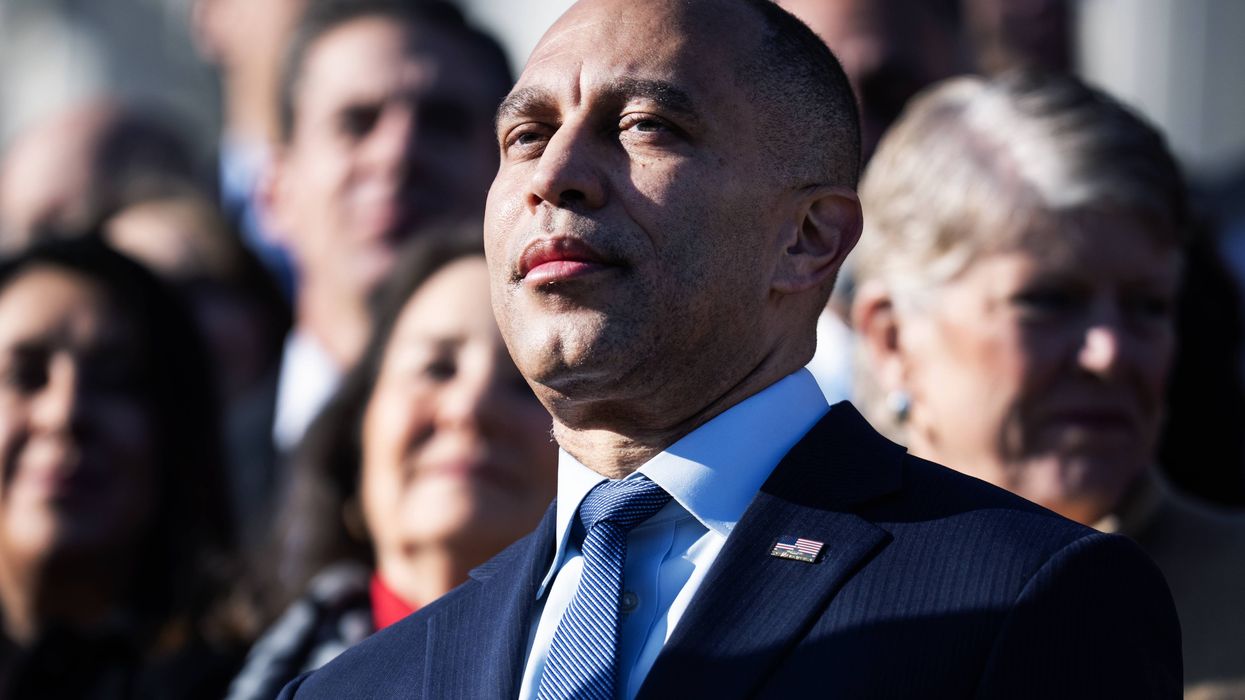January, 31 2011, 01:18pm EDT
Monterey County Ranks #1 for Youth Homicide Victimization in California, New Study Reveals
Study Compares Rates of Homicide Victimization for Californians Ages 10 to 24 by County, Race, Ethnicity, Weapon Used, Circumstance, and Location
WASHINGTON
Monterey County's young people
suffer a murder rate that leads all California counties and is nearly three
times the overall state rate for the same age range, according to "Lost
Youth: A County-by-County Analysis of 2009 California Homicide Victims
Ages 10 to 24," a new study analyzing unpublished California Department
of Justice Supplementary Homicide Report (SHR) data released today by the
Violence Policy Center (VPC).
The study, available at https://www.vpc.org/studies/cayouth.pdf
and funded by The California Wellness Foundation, uses the most recent data
available to rank California
counties by their homicide rates for youth and young adults ages 10 to 24.
The study finds overwhelmingly that firearms, usually
handguns, are the weapon of choice. The study also shows that there are vast
disparities between groups: in California,
young African-Americans are more than 14 times more likely to be murdered than
young whites.
Josh Sugarmann, VPC executive director and study co-author
states, "Comparing county by county the
homicide rates for youth and young adults in California shows the continuing,
urgent need for tailored, localized approaches to reducing youth homicide that
integrate prevention and intervention while engaging local leaders and
community stakeholders."
TOP 10 COUNTIES BY YOUTH HOMICIDE RATE
The top 10 counties with each county's corresponding
homicide victimization rate for its population of Californians ages 10 to 24
are:
1) Monterey
County, 31.24 per 100,000
2) Alameda
County, 20.69 per 100,000
3) Kern
County, 19.98 per 100,000
4) Contra
Costa County,
19.17 per 100,000
5) Tulare
County, 15.31 per 100,000
6) Los Angeles
County, 14.61 per 100,000
7) San Joaquin
County, 13.86 per 100,000
8) Stanislaus
County, 13.49 per 100,000
9) Merced
County, 12.87 per 100,000
10) Solano
County, 12.59 per
100,000
-State overall rate for 10- to 24-year-olds: 10.48 per
100,000.
CONCLUSION AND RECOMMENDATIONS
The study states that "homicide,
and particularly gun homicide, continues to be one of the most pressing public
health concerns in California among youth and young adults ages 10 to
24."
According to the Violence
Policy Center,
"effective violence prevention
strategies must include measures that prioritize preventing youth and young
adults from accessing firearms, especially handguns."
The study recommends further research into "the identification of the make, model, and
caliber of weapons most preferred by this age group as well as analyses
identifying the sources of the weapons" and an "expansion of comprehensive violence
intervention and prevention strategies that include a focus on the
psychological well-being of witnesses and survivors of gun violence."
BACKGROUND FOR MEDIA
The study contains a detailed analysis for each of the top
10 counties, including: gender; race/ethnicity; most common weapons;
victim to offender relationship; circumstance; and location. (To help
ensure more stable rates, only counties with a population of at least 25,000
youth and young adults between the ages of 10 to 24 were included in the
study. The selected counties account for 99 percent of homicide victims
ages 10 to 24 in California and 98 percent of California's
population ages 10 to 24 for 2009.)
STATEWIDE COMPARISONS
The study's statewide findings include more detailed
information, broken down by a number of factors.
GENDER, RACE, and ETHNICITY
Out of the 803 homicide victims ages 10 to 24 in California in 2009:
-90% were male and 10% were female.
-56% were Hispanic, 30% black, 10% white, 3% Asian, and one
percent were "other."
Overall, black victims were killed at a rate more than 14
times higher than white victims. Hispanic victims were killed at a rate
nearly four times higher than white victims. Asian victims were killed at
roughly the same rate as white victims.
WEAPON USED
Firearms, especially handguns, were the most common weapon
used to murder youth and young adults. Of the 794 homicides for which the
murder weapon could be identified, 84 percent of victims died by gunfire.
Of these, 76 percent were killed with handguns.
RELATIONSHIP
For homicides in which the victim to offender relationship
could be identified, 45 percent were killed by a stranger. Thirty-two
percent were killed by someone they knew. An additional 23 percent were
identified as gang members. Black and Hispanic victims were more likely
to be killed by a stranger than white or Asian victims.
CIRCUMSTANCE
The overwhelming majority of homicides of youth and young
adults were not related to any other felony crime. For the 618 homicides
in which the circumstances between the victim and offender could be identified,
82 percent were not related to the commission of any other felony. Of
these, 68 percent were gang-related.
LOCATION
For all races except for Asian victims, the most common
homicide location was a street, sidewalk, or parking lot. Among youth and
young adults for homicides in which the location could be determined, 56
percent occurred on a street, sidewalk, or in a parking lot. Fifteen
percent occurred in the home of the victim or offender. Eleven percent
occurred at another residence, and seven percent occurred in a vehicle.
The Violence Policy Center (VPC) works to stop gun death and injury through research, education, advocacy, and collaboration. Founded in 1988 by Executive Director Josh Sugarmann, a native of Newtown, Connecticut, the VPC informs the public about the impact of gun violence on their daily lives, exposes the profit-driven marketing and lobbying activities of the firearms industry and gun lobby, offers unique technical expertise to policymakers, organizations, and advocates on the federal, state, and local levels, and works for policy changes that save lives. The VPC has a long and proven record of policy successes on the federal, state, and local levels, leading the National Rifle Association to acknowledge us as "the most effective ... anti-gun rabble-rouser in Washington."
LATEST NEWS
Democrats to Spotlight Trump Election Threats at January 6 Hearing
A panel aimed at fighting GOP efforts to "rewrite history" regarding the US Capitol attack will also "examine ongoing threats to free and fair elections posed by an out-of-control Trump administration."
Dec 30, 2025
At a hearing on the fifth anniversary of the January 6, 2021 attack on the US Capitol next week, House Democrats plan to look back as well as forward—countering Republicans' efforts to "rewrite history and whitewash" the attempted insurrection by President Donald Trump's supporters and warning of the GOP's threats to upcoming elections and to US democracy.
The event next Tuesday will be an unofficial one, as Democrats are in the minority and do not have the authority to call formal hearings.
House Minority Leader Hakeem Jeffries (D-NY) said in a Dear Colleague letter to other lawmakers on Monday that the hearing would shed light on the "toxic priorities" of Trump, who after taking office in January issued blanket pardons for nearly 1,600 people who were charged in connection to the January 6 attack.
" Donald Trump promised to lower the high cost of living on day one of his presidency," wrote Jeffries. "One year later, costs are out of control, America is too expensive, and Republicans believe that the affordability crisis is a hoax. They have done nothing to lower costs for everyday Americans, but are gutting healthcare and enacted massive tax breaks for their billionaire donors."
While doing nothing to make life more affordable for families—and helping to make household grocery and electricity bills higher—Trump has pardoned hundreds of people who "brutally assaulted law enforcement officers" on January 6, including several who have been charged with new crimes and "a troubling number" who "have been arrested for child molestation, sexual assault, and kidnapping," said the Democratic leader.
"Republicans own the failed economy, their broken promise to lower costs, and the crime spree the dangerous criminals pardoned by the president have visited on our country," wrote Jeffries.
The mob on January 6 attempted to stop the certification of the 2020 election, which Trump had spent weeks at that point insisting had been stolen from him and which the president and his allies continue to deny was won by former President Joe Biden.
But Republicans including House Speaker Mike Johnson (R-La.) have made efforts to sanitize the attack, which took place after Trump held a rally urging his supporters to march "over to the Capitol building to peacefully and patriotically make your voices heard" and said they would see whether "Republicans stand strong for integrity of our elections."
After Trump took office this year, Johnson announced a new congressional subcommittee that would expose "the false narratives peddled by” the previous bipartisan panel that issued a report in 2022 about Trump's efforts to overturn the 2020 election results and his encouragement of the attack.
Rep. Bennie Thompson (D-Miss.), who led the bipartisan committee, will also oversee next Tuesday's hearing.
In addition to exposing "the election deniers who hold high-level positions of significance in the executive branch," wrote Jeffries on Monday, the panel "will examine ongoing threats to free and fair elections posed by an out-of-control Trump administration."
The president has pushed Republican-led state legislatures in Texas, Missouri, North Carolina, and other states to draw new congressional maps to help the GOP maintain power in the 2026 midterm elections.
He signed an executive order in March that purported to require proof of citizenship for people who register to vote—an effort that was blocked by a federal judge in October—and the US Department of Justice has sued several states to compel them to share voter registration data with the federal government.
Legal experts have emphasized that the president does not have the authority to change how elections are run, despite Trump's continued efforts.
Jeffries said the January 6th Select Committee would join Thompson in leading the hearing, which is scheduled for 10:00 am Eastern time next Tuesday.
Keep ReadingShow Less
'This Is an Act of War': CIA Carried Out Drone Strike on Port Facility Inside Venezuela
One expert called the reported drone strike a "violation of Article 2(4) of the UN Charter and the Take Care Clause of the Constitution."
Dec 30, 2025
The US Central Intelligence Agency reportedly carried out a drone strike earlier this month on a port facility inside Venezuela, marking the first time the Trump administration launched an attack within the South American country amid a broader military campaign that observers fear could lead to war.
CNN on Monday was first to report the details of the CIA drone strike, days after President Donald Trump suggested in a radio interview that the US recently took out a "big facility" in Venezuela, prompting confusion and alarm. Trump authorized covert CIA action against Venezuela in October.
According to CNN, which cited unnamed sources, the drone strike "targeted a remote dock on the Venezuelan coast that the US government believed was being used by the Venezuelan gang Tren de Aragua to store drugs and move them onto boats for onward shipping."
To date, the Trump administration has not provided any evidence to support its claim that boats it has illegally bombed in international waters were involved in drug trafficking. No casualties were reported from the drone strike, and the Venezuelan government has not publicly commented on the attack.
"This is an act of war and illegal under both US and international law, let’s just be clear about that," journalist Mehdi Hasan wrote in response to news of the drone strike.
Brian Finucane, senior adviser with the US Program at the International Crisis Group, called the reported drone attack a "violation of Article 2(4) of the UN Charter and the Take Care Clause of the Constitution."
"Seemingly conducted as covert action and then casually disclosed by POTUS while calling into a radio show," he added.
CNN's reporting, later corroborated by the New York Times, came after the Trump administration launched its 30th strike on a vessel in international waters, bringing the death toll from the lawless military campaign to at least 107.
The Times reported late Monday that "it is not clear" if the drone used in last week's mission "was owned by the CIA or borrowed from the US military."
"The Pentagon has stationed several MQ-9 Reaper drones, which carry Hellfire missiles, at bases in Puerto Rico as part of the pressure campaign," the Times added.
Keep ReadingShow Less
30th Strike in Trump's High-Seas Kill Spree Claims 2 More Lives
At least 107 people have been killed in US bombings of boats that the Trump administration claims—without evidence—were involved in narco-trafficking in the Caribbean Sea and Pacific Ocean.
Dec 29, 2025
The US military said Monday that two alleged drug smugglers were killed in the bombing of another boat in the eastern Pacific Ocean, but—as has been the case throughout 30 such strikes—offered no verifiable evidence to support its claim.
US Southern Command (SOUTHCOM) said on X that, on orders from Defense Secretary Pete Hegseth, "Joint Task Force Southern Spear conducted a lethal kinetic strike on a vessel operated by Designated Terrorist Organizations in international waters."
"Intelligence confirmed the vessel was transiting along known narco-trafficking routes in the eastern Pacific and was engaged in narco-trafficking operations," SOUTHCOM added. "Two male narco-terrorists were killed. No US military forces were harmed."
According to the Trump administration's figures, at least 107 people have been killed in 30 boat strikes since early September. The administration has tried to justify the strikes to Congress by claiming that the US is in an “armed conflict” with drug cartels, while legal scholars and Democratic US lawmakers counter that the bombings are likely war crimes.
War powers resolutions aimed at reining in President Donald Trump’s ability to extrajudicially execute alleged drug traffickers in or near Venezuela failed to pass the Senate in October and the House earlier this month.
Monday's strike came amid Trump's escalating aggression against Venezuela, including the deployment of warships and thousands of US troops to the region, authorization of covert CIA operations targeting the country's socialist government, and threats to launch ground attacks.
Trump claimed Monday without providing evidence that US forces destroyed a "big facility" in an unspecified country where narco-traffickers' "ships come from."
Keep ReadingShow Less
Most Popular


